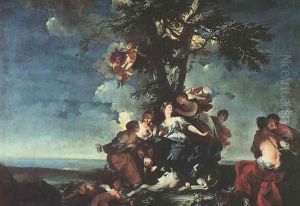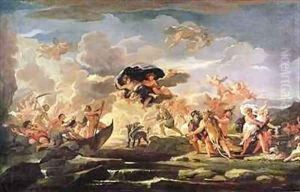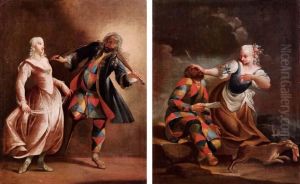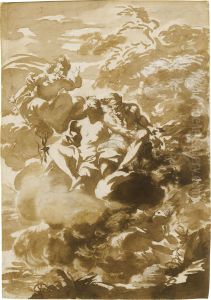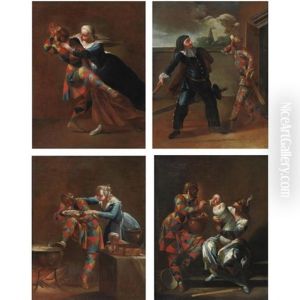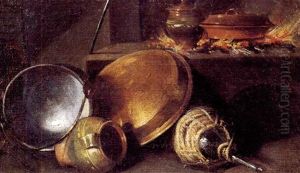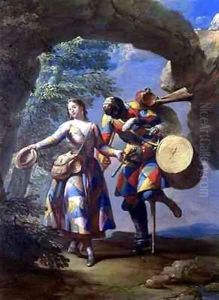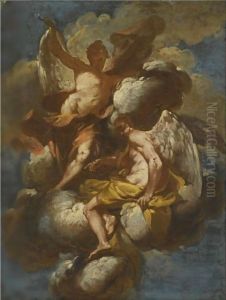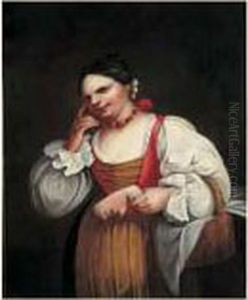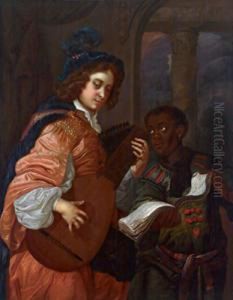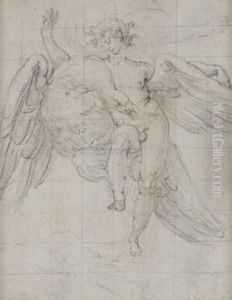Giovanni Domenico Ferretti Paintings
Giovanni Domenico Ferretti, also known as Giandomenico d'Imola, was an Italian Rococo painter born in Florence, Italy. Ferretti began his artistic journey under the tutelage of Tommaso Redi and later Giovanni Battista Galestruzzi. He honed his skills further by studying the works of the Baroque masters Pietro da Cortona and Ciro Ferri. Ferretti's work was heavily influenced by the Baroque style, but he also incorporated the lightness and playfulness of the emerging Rococo movement.
Ferretti became well-known for his frescoes and oil paintings, which often depicted historical and mythological themes. His style is characterized by dynamic compositions, vibrant colors, and a deft handling of light and shadow. One of his most famous works is the fresco series in the Palazzo Panciatichi and Palazzo Montauto in Florence, which showcases his mastery of large-scale decorative painting.
Despite his success in Florence, Ferretti's work also took him to other Italian cities. In Pisa, he painted the ceiling of the church of San Paolo all'Orto with frescoes depicting the life of Saint Paul. Throughout his career, Ferretti received numerous commissions from religious institutions, further cementing his reputation as a leading painter of his time.
Giovanni Domenico Ferretti's influence extended to his pupils, who carried on his artistic legacy. He was an important figure in the Florentine Rococo period, and his works continue to be studied and admired for their artistic significance and beauty. Ferretti passed away in Florence in 1768, leaving behind a rich body of work that contributes to the understanding of the transition from Baroque to Rococo art in Italy.
